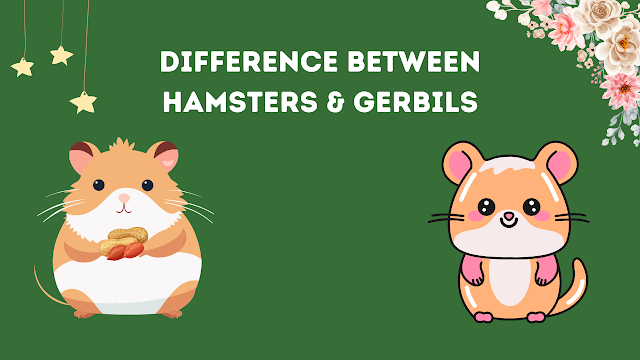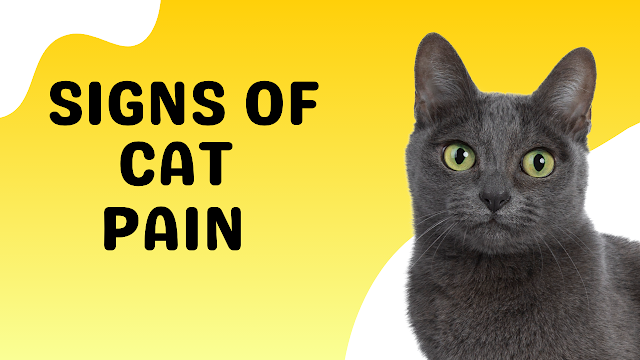5 Differences Between Hamsters and Gerbils
 |
When it comes to choosing a small pet, hamsters and gerbils are popular options known for their adorable appearance and playful nature. While they may seem similar at first glance, there are distinct differences between these furry companions. In this article, we'll explore the unique characteristics of hamsters and gerbils to help you make an informed decision about which pet is right for you.
Physical Characteristics
Hamsters and gerbils exhibit distinct physical features that set them apart. Hamsters typically have a stout body with short legs, a short tail, and large, round cheek pouches designed for storing food. These pouches can expand to several times the size of the hamster's head, allowing them to transport and store food efficiently.
In contrast, gerbils have a more slender body with longer legs, a long, tufted tail, and smaller cheek pouches. Their tails are covered in fur and are often longer than their bodies.
Additionally, gerbils have prominent hind legs adapted for hopping and jumping, reflecting their agile and active nature. Understanding these physical differences can help prospective pet owners choose the small animal companion that best suits their preferences and lifestyle.
Social Behavior
Social behavior is a significant point of differentiation between hamsters and gerbils. Hamsters are solitary creatures by nature and prefer to live alone in their habitat. They can become territorial and aggressive towards other hamsters, especially if forced to share space.
In contrast, gerbils are highly social animals that thrive in same-sex pairs or small groups. They form strong bonds with their cage mates and engage in various social behaviors, such as grooming each other, playing together, and cuddling.
For gerbils, companionship is essential for their well-being, and they may exhibit signs of loneliness or stress if kept alone. Therefore, if you're considering gerbils as pets, it's recommended to keep them in pairs or groups to ensure their social needs are met.
Activity Levels
Hamsters and gerbils exhibit different activity patterns due to their nocturnal and diurnal nature, respectively. Hamsters are most active during the night, engaging in behaviors such as running on exercise wheels, burrowing in bedding, and exploring their surroundings under the cover of darkness. Their nocturnal habits make them ideal pets for individuals who are awake during the evening hours.
In contrast, gerbils are diurnal animals, meaning they are most active during the day. They enjoy digging, tunneling, and exploring their habitat in the daylight hours. Gerbils' diurnal behavior makes them entertaining pets to watch and interact with during the daytime, making them suitable companions for those who are awake during daylight hours.
Housing Requirements
When it comes to housing, the needs of hamsters and gerbils differ significantly. Hamsters are solitary creatures and require individual housing to prevent territorial conflicts. A spacious cage with ample room for burrowing, climbing, and exploring is essential for their well-being. Provide bedding material such as paper-based or aspen shavings for digging and nesting, along with chew toys and hiding spots for enrichment.
Gerbils, on the other hand, are highly social animals and thrive in same-sex pairs or small groups. They require larger habitats with multiple levels, tunnels, and hiding spots to accommodate their social interactions and natural behaviors. A gerbil tank or habitat with deep bedding for tunneling, along with toys and accessories for mental stimulation, is ideal for keeping gerbils happy and healthy.
Dietary Needs
Both hamsters and gerbils have similar dietary requirements, but there are subtle differences to consider. High-quality commercial pellets formulated specifically for hamsters or gerbils should form the foundation of their diet, providing essential nutrients and vitamins.
Additionally, both species enjoy a variety of fresh vegetables and fruits as supplements to their main diet. However, it's important to note that while hamsters can tolerate occasional treats such as nuts and seeds, gerbils are more prone to obesity and should be given treats sparingly.
It's crucial to monitor portion sizes and ensure a balanced diet to prevent nutritional deficiencies or health issues. Consult with a veterinarian or small pet specialist for personalized dietary recommendations based on your pet's age, size, and individual needs.
Conclusion
While hamsters and gerbils share some similarities, such as their small size and cute appearance, they also have distinct differences in terms of social behavior, activity levels, housing requirements, and dietary needs. Understanding these differences is essential for selecting the right pet that aligns with your lifestyle, preferences, and ability to provide proper care and enrichment. Whether you're drawn to the solitary nature of hamsters or the social dynamics of gerbils, both make wonderful pets when provided with the appropriate environment and attention.





Comments
Post a Comment